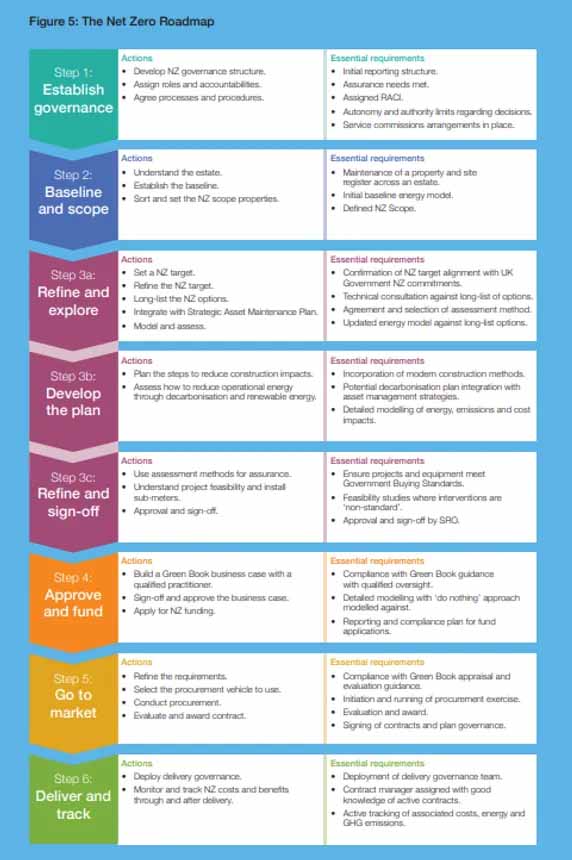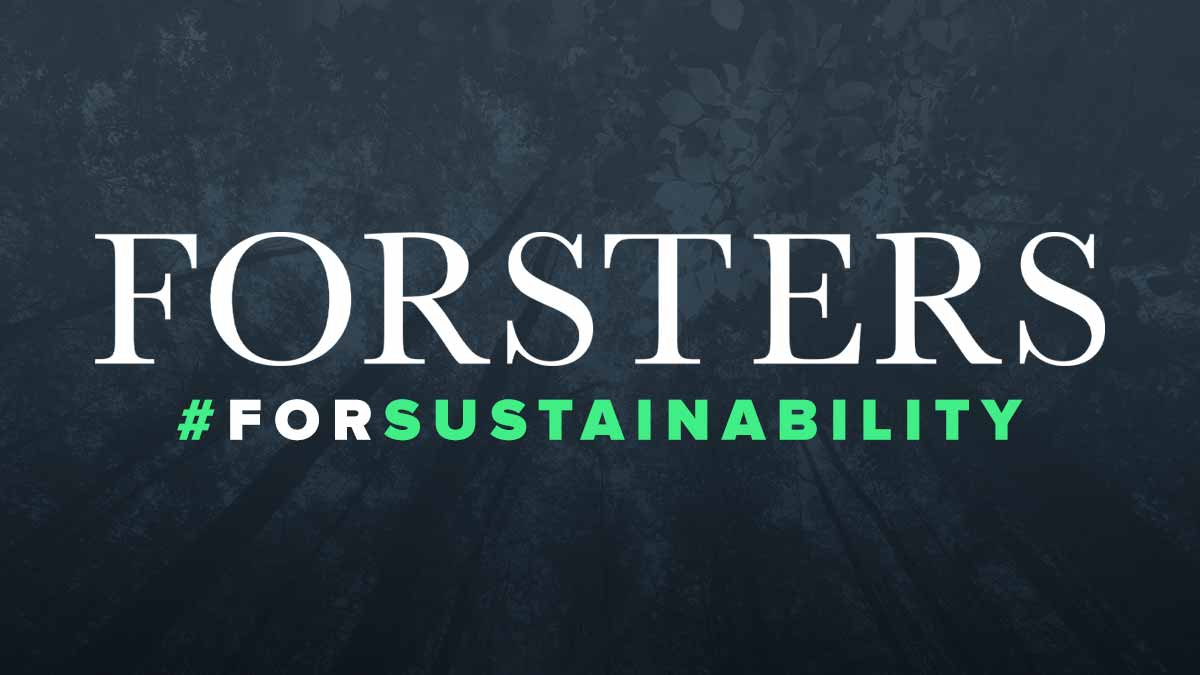"Follow my lead": the Government's Net Zero Playbook
The UK public sector manages more than 300,000 individual properties, at a combined value of £515bn, which makes it the largest property portfolio in the country – so it is very important that it must lead the way in green matters and set an example to the rest of the industry. As the built environment contributes up to 42% of the UK's total carbon footprint, the efficient management and decarbonisation of property portfolios is a focal point in the UK's transition to net zero. As the report notes, it is estimated that 80% of the UK's buildings in 2050 are already standing today, so it is essential that the current stock is appropriately addressed, as well as new construction projects.
Therefore in November 2021, the UK Government released its "Net Zero Estate Playbook" which (at 88 pages) is its step-by-step guide to decarbonising government property, building on the work that is already underway across government to make the public estate greener. It provides guidance (a) to support UK Government departments and public sector bodies to transition their estate towards Net Zero and (b) to the Government property professionals on how to approach the design, implementation, and monitoring of a net zero strategy and delivery programme. This guide will be revised over the years as the Government's net zero policy is developed further.
Whilst the playbook indicates that all government organisations have a role to play in the delivery of net zero commitments, some departments play a particular role to push this forward:
- BEIS (Department for Business, Energy and Industrial Strategy): controls the overall policy for UK-wide activity to deliver net zero, including public sector decarbonisation
- DEFRA (Department for Environment, Food and Rural Affairs): has responsibility for the Government's 25 Year Environment Plan to tackle effects of climate change and also publishes the Greening Government Commitments or GCG (setting out how departments/agencies will contribute in reducing their environmental impacts)
- OGP (Office of Government Policy): provides leadership and help to departments to meet their GCG targets and achieve net zero across the Government estate. The OGP is supported by the IPA (Infrastructure & Projects Authority) who improve the way projects/programmes are delivered across Government (i.e. in property and construction projects)
- GPA (Government Property Agency): has a programme to make carbon and energy reducing interventions to buildings in the Central Government office portfolio.
The Guide wants to seek a consistent implementation of net zero across departments.
- To drive consistency, the playbook sets a high-level (but yet pretty detailed!) "Net Zero Estate Strategy", detailing the common steps to develop and implement a successful net zero strategy, recognising that these steps can be applied independently and may not always be applied in succession. It basically sets out details from start to finish - establishing the processes and understanding the estate, developing a plan, applying for funding, procuring contracts and finally delivering.
- It emphasises the importance of a clear definition and measurement of emissions, so sets out guidance on assessing emissions within the property life cycle phases, setting activity boundaries to establish how to measure emissions and understanding different types of emissions (i.e. direct and indirect) and how to prioritise them. This does not yet deal with whole life carbon emissions as this is a developing area. It should be noted that offsetting of any carbon is considered only a last resort once all possible measures for reducing both embodied carbon and operational energy emissions have been exhausted and purchasing offsetting cannot be currently recommended for Government property.
- It provides guidance for how to navigate the net zero estate strategy where assets are used for multiple purposes (such as offices and labs) as well as buildings that are publicly owned but partly leased to other organisations. As it noted "[U]sers of Government property are increasingly recognising that the Environmental Performance of the buildings they manage and occupy is an integral element of their responsible operations and risk management. For new and renewed leases, owners and occupiers should seek to include green leases / green clauses in leases with the aim of driving down operational emissions, limiting regulatory risk exposure, reducing operational costs and managing reputation. Where appropriate, National Property Spend Control Guidance should be followed. This ensures that organisations occupying leasehold properties plan investment towards achieving NZ [net zero] while delivering value for money outcomes".
All in all, it seems a very helpful guide and may be a useful example for other organisations in considering how to design, implement and monitor the net zero strategy for their portfolios.
Sarah is a Senior Associate in our Commercial Real Estate team.

Our Sustainability Hub
Our sustainability hub brings together the team’s insights and legal expertise on a broad range of environmental matters that affect our clients' business and personal affairs. This is a rapidly evolving and wide-ranging area of law and we will continue to share our insights about related legal developments on this hub.

